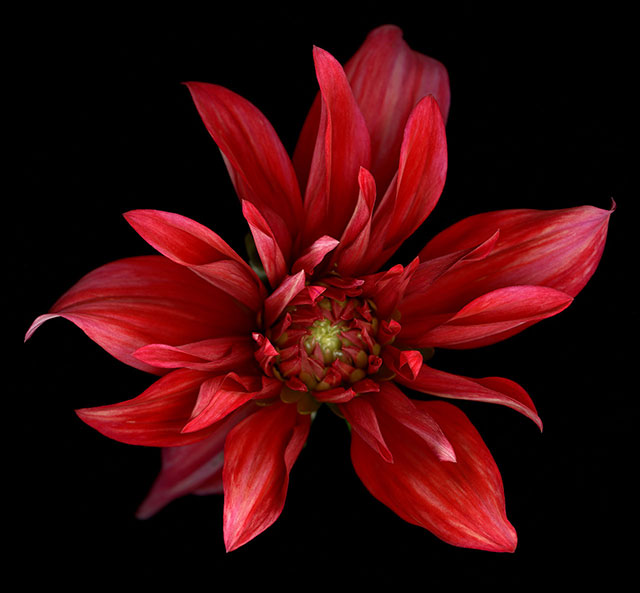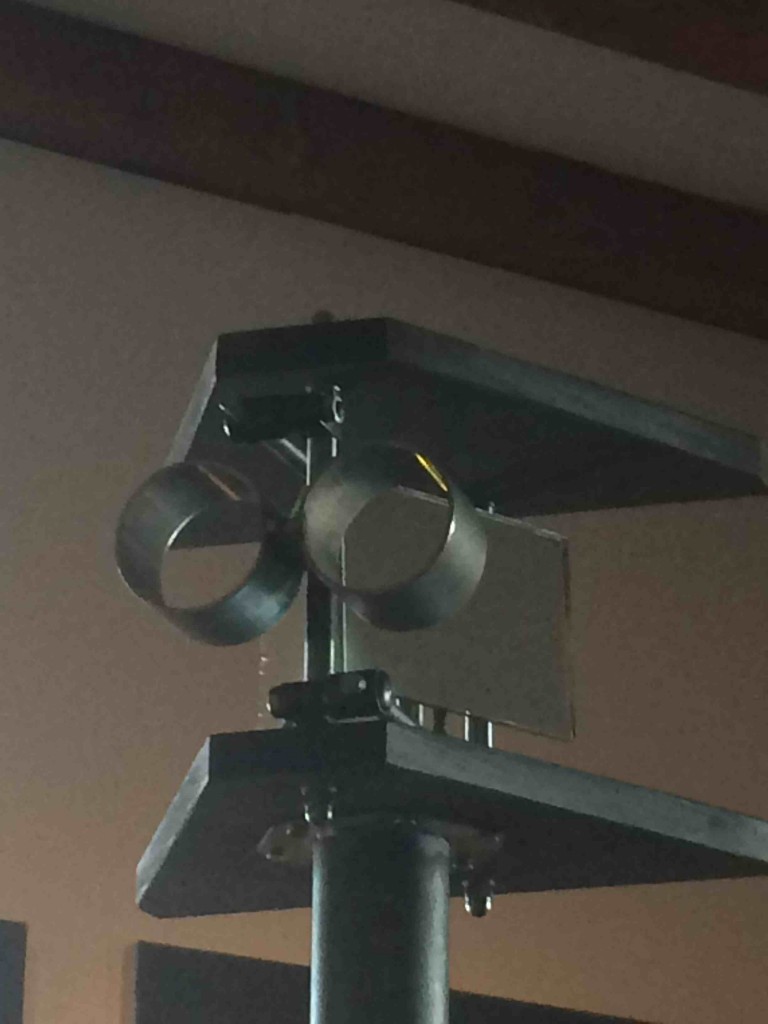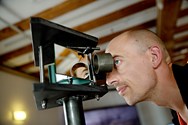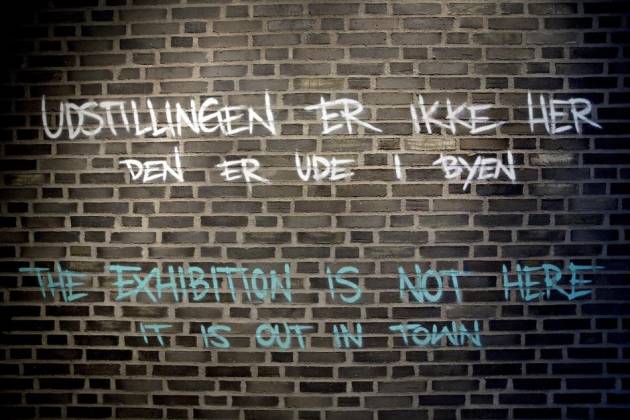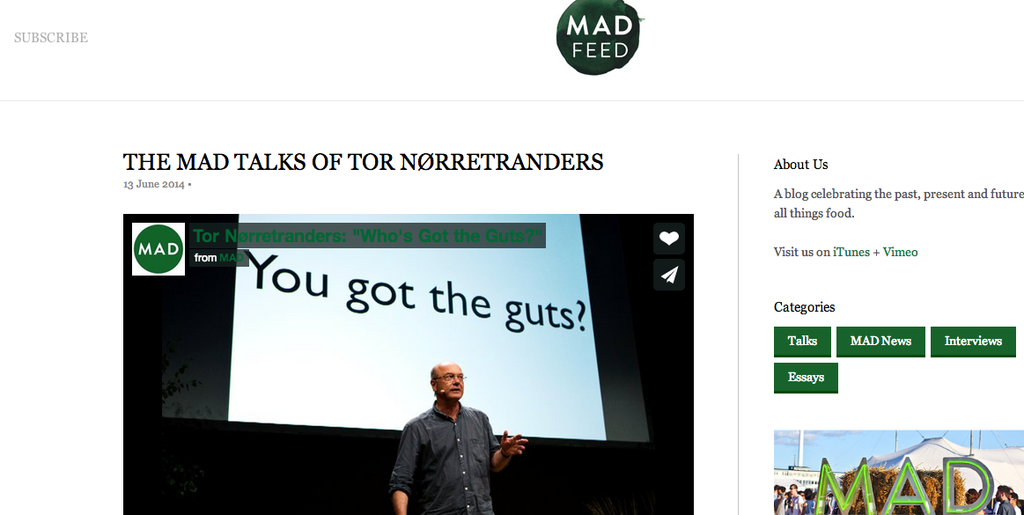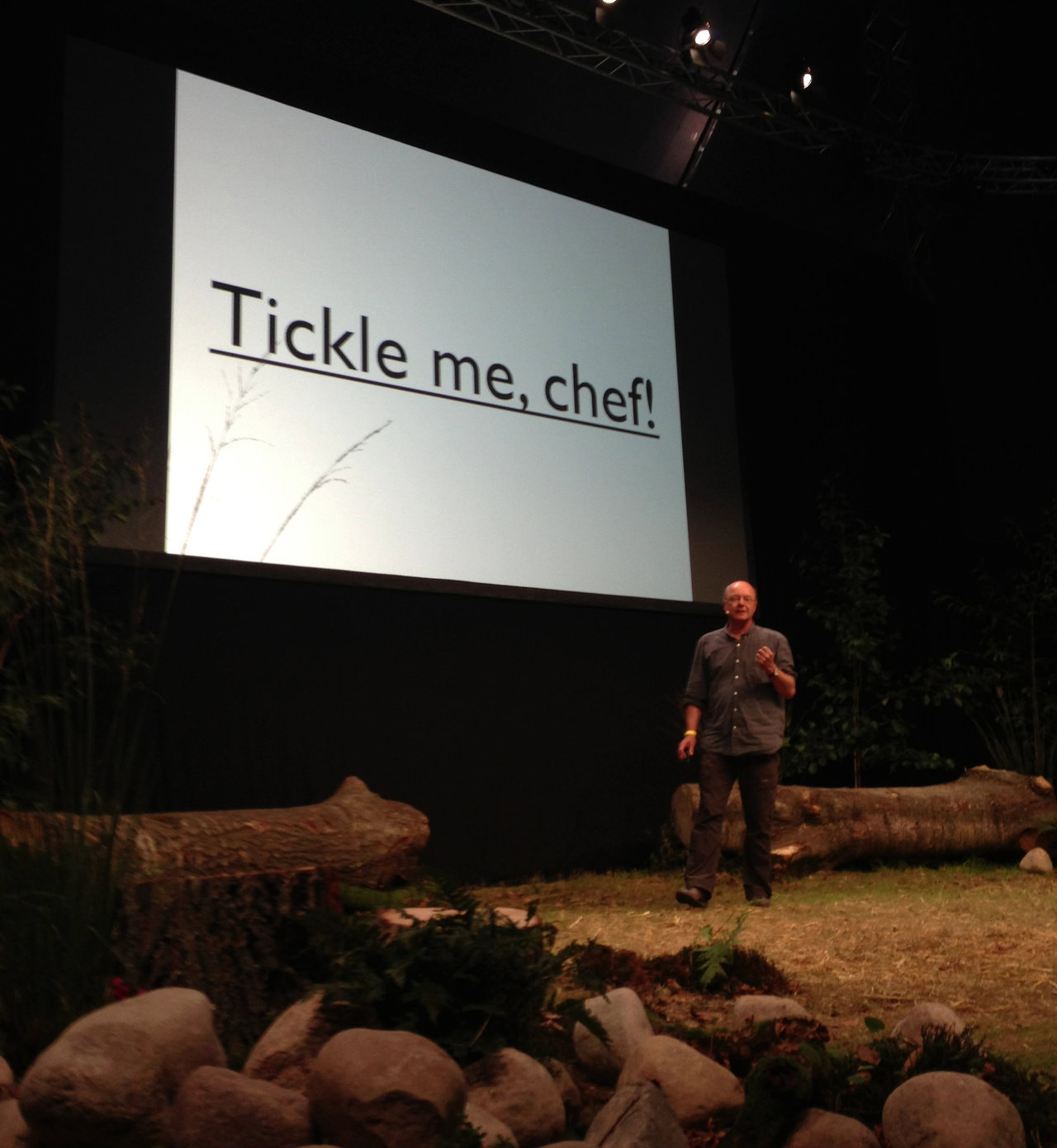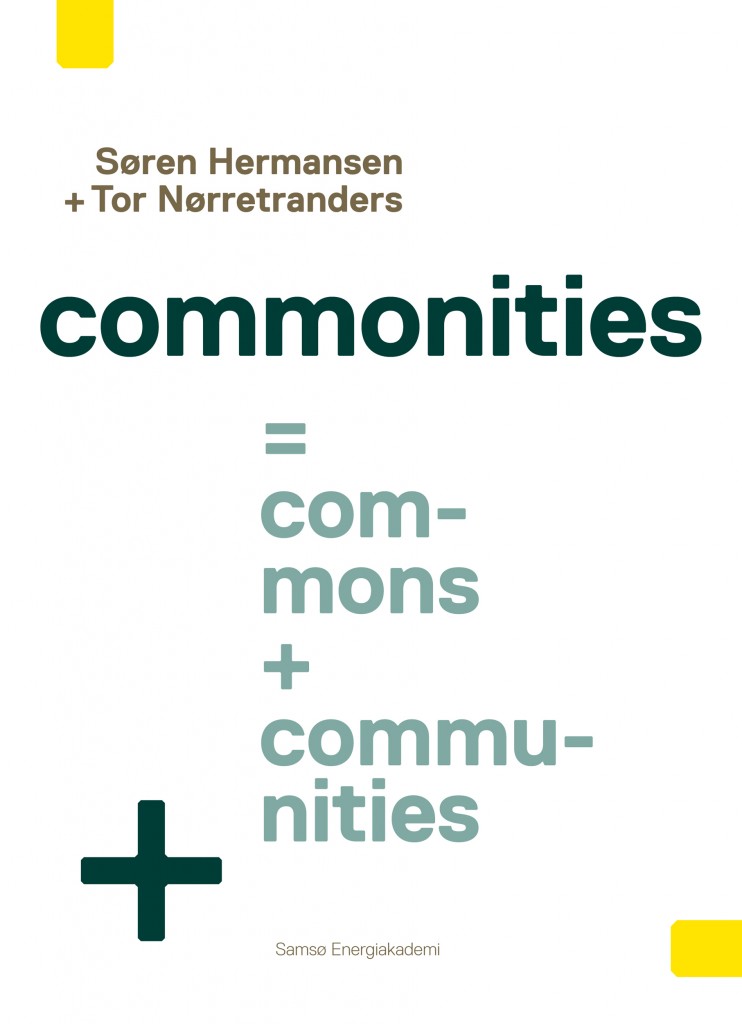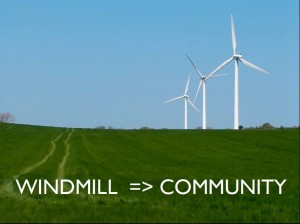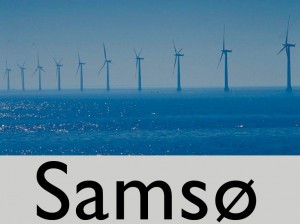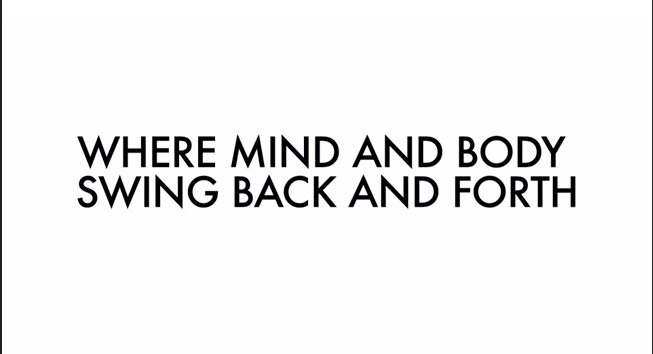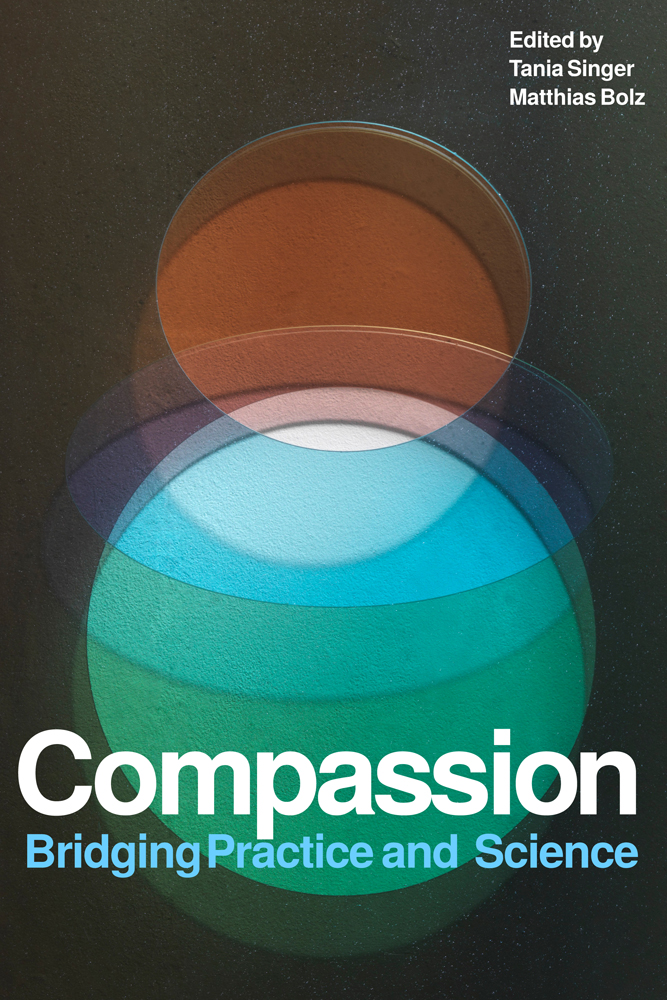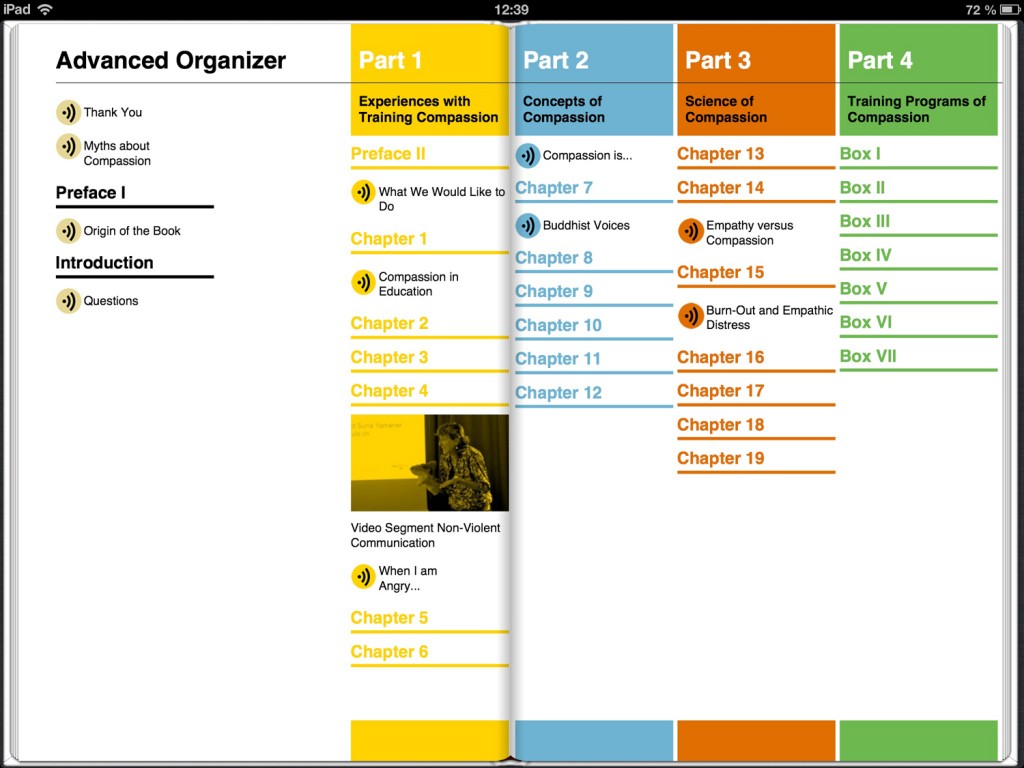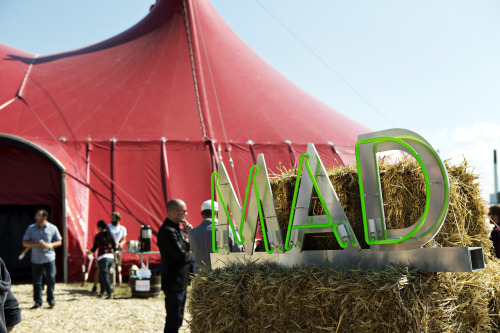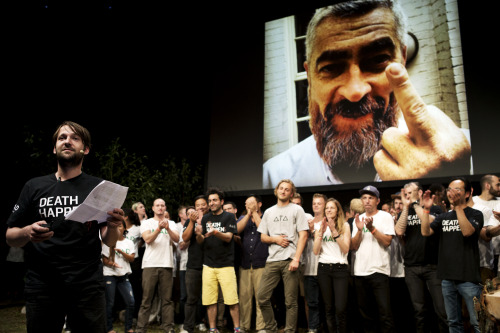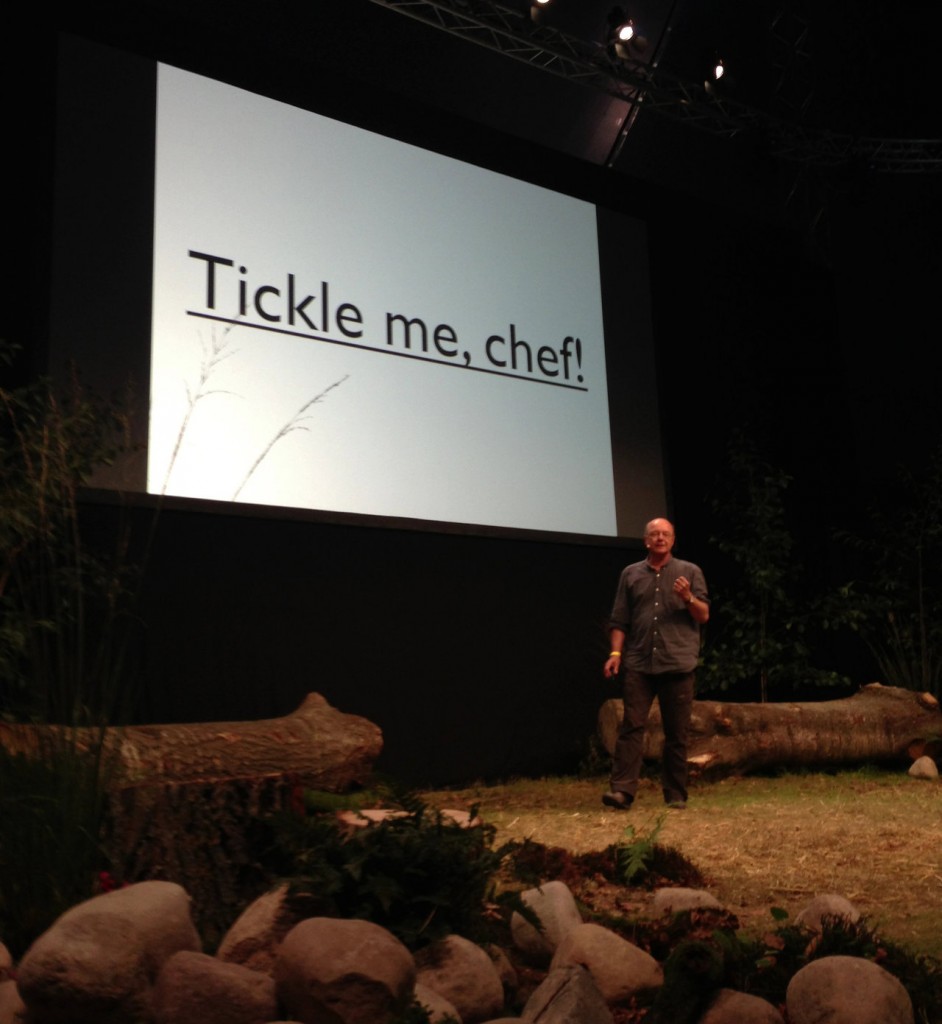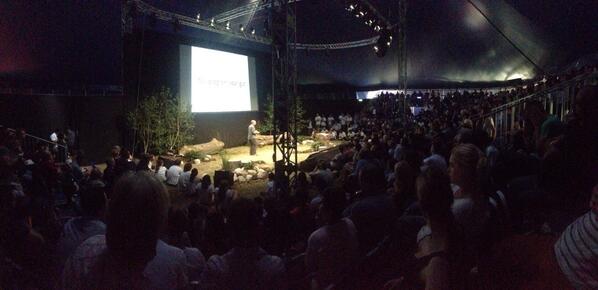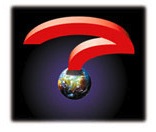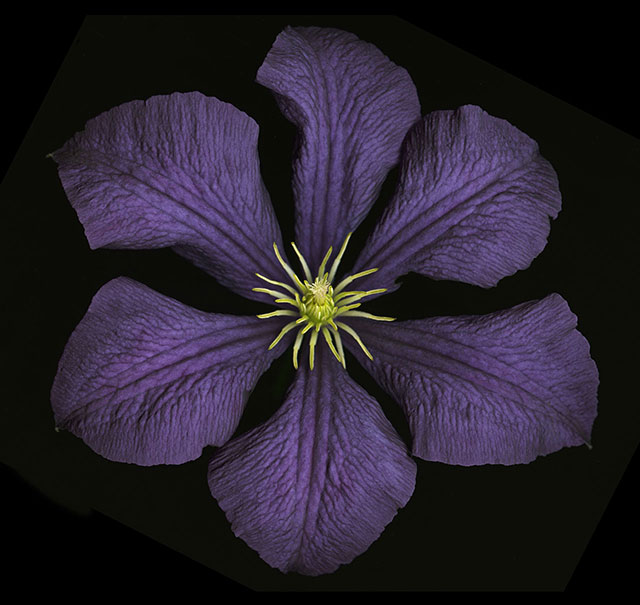Here is a banner with Danish text:

It describes an exhibition about architecture that can be seen at Danish Architecture Center DAC in Copenhagen until September 21.
I strongly recommend seeing the exhibition (perhaps not surprising since I am the curator of it). It attempts to bring a new take on architecture — not seeing it as a display of aesthetic objetcs, but as the channeling of flows through life.
The exhibition is as much in English as in Danish — all texts and videos are in both languages. On display is the work of the outstanding Danish studio Lundgaard & Tranberg and for of their many buildings in Copenhagen.
The exhibition was created involving a lot of talented people contributing wonderful visions — a treat of sensory experience, huge models, drone photography, stereoscopes and running water. It is an eye-opening show — I hope. Go see!
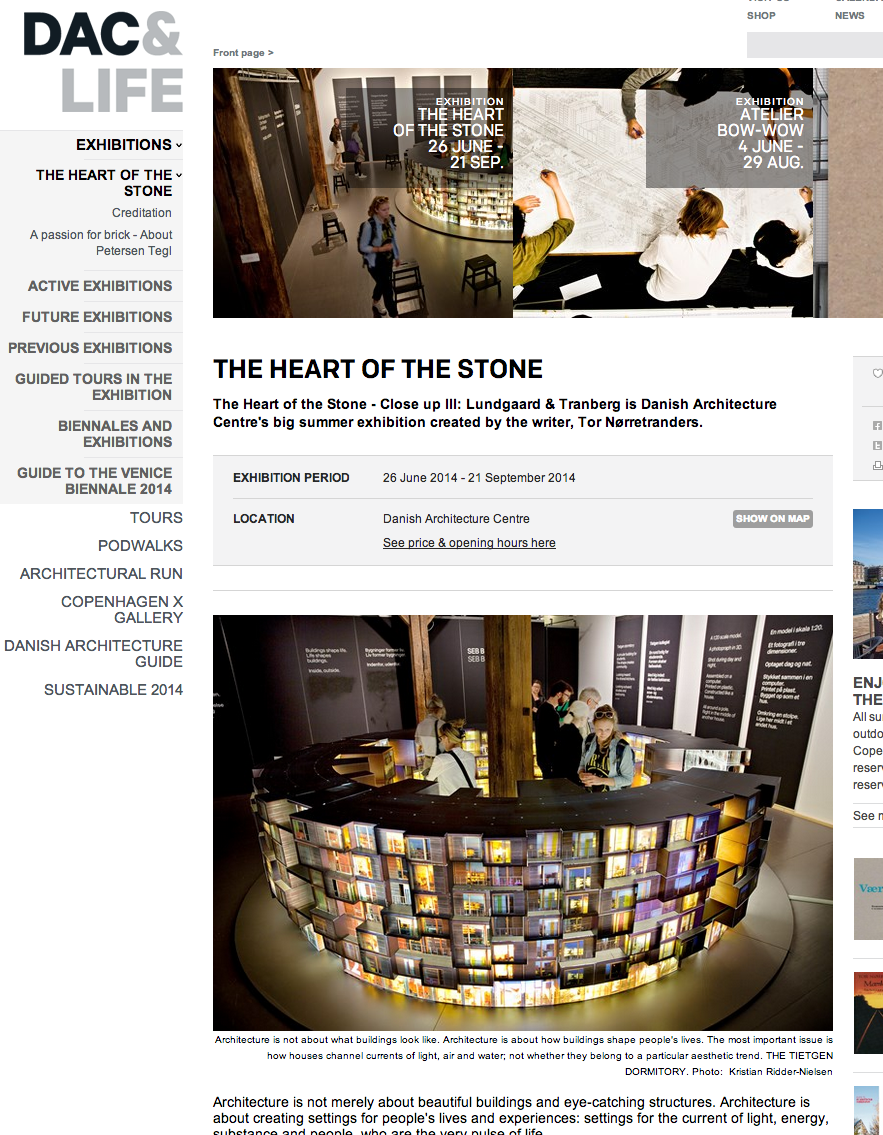
Here is how the exhibition ins described at DACs homepage:
Architecture is not merely about beautiful buildings and eye-catching structures. Architecture is about creating settings for people’s lives and experiences: settings for the current of light, energy, substance and people, who are the very pulse of life.
This is the fundamental contention made by the writer, Tor Nørretranders, who has curated The Heart of the Stone, Danish Architecture Centre’s major summer exhibition, which looks at the work of the internationally renowned Danish architecture practice, Lundgaard & Tranberg.
The Heart of the Stone is not a classic architectural exhibition with a display of models of architects’ works. It is a diverse presentation, involving brickwork, images, texts, running water, mirrors, optical effects, computer models and poems, which will stimulate visitors’ sense of touch, spatial awareness, sense of depth, perception of time and scientific curiosity.
While the exhibition is of course about the work of Lundgaard & Tranberg, it also investigates the essence of the endeavours made by architects to create settings for the progress of life.
But the most fundamental aspect of this exhibition is that it is not located in the exhibition space. The experience provided by the galleries of the Danish Architecture Centre is intended to be an eye-opener, an introduction to an excursion around the city, and an opportunity to look at the buildings from the perspective engendered by the exhibition.
The exhibition is the third in Danish Architecture Centre’s exhibition series, Close Up.
